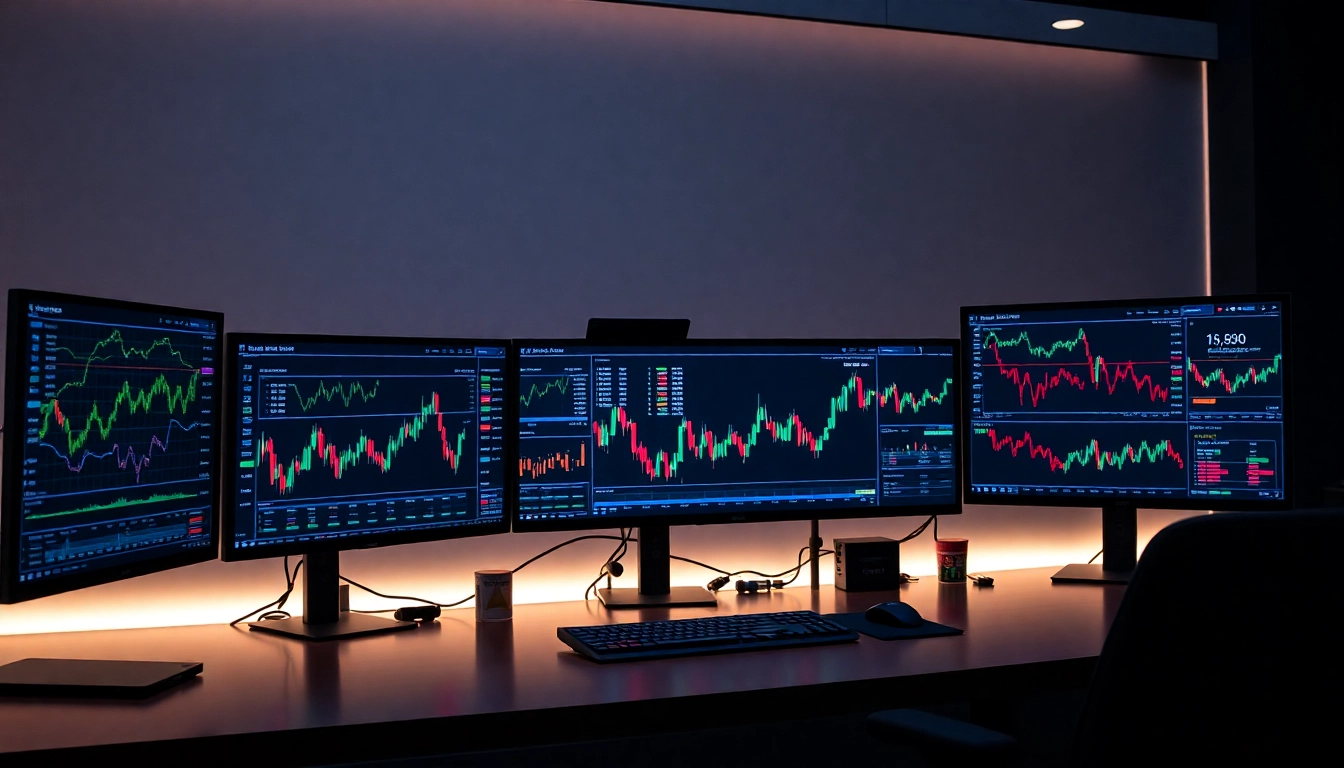Introduction to Trading View: Features and Benefits
In the rapidly evolving world of financial markets, having a reliable and comprehensive charting and analysis platform is essential for traders and investors aiming to make informed decisions. trading view has emerged as a leading platform, offering powerful tools that cater to both novice and experienced market participants. Its importance lies in providing real-time data, advanced technical analysis, and a collaborative social environment, all integrated into a user-friendly interface. This comprehensive overview explores the core features, benefits, and strategic advantages of trading view, highlighting why it is a must-have tool for modern market analysis.
Setting Up Your Trading View Workspace for Success
Creating Custom Watchlists and Charts
The foundation of effective trading analysis begins with organizing the right tools and information. Trading view allows users to create highly customizable watchlists, enabling easy monitoring of assets such as stocks, cryptocurrencies, indices, and commodities. Users can add, remove, and categorize assets, ensuring quick access to relevant market data. Moreover, the platform’s advanced charting system supports multi-study layouts, enabling traders to visualize different technical indicators simultaneously. For example, a trader focusing on Bitcoin can set up a chart with RSI, moving averages, and Bollinger Bands, all customized to their preference.
Identifying key support and resistance levels, trendlines, and price patterns becomes more intuitive when personalized charts are set up efficiently. The ability to save templates and switch between different layouts without losing previous configurations accelerates the analysis process and enhances productivity.
Utilizing Alerts and Notifications Effectively
Staying ahead in trading requires timely alerts on significant market movements. Trading view’s alert system allows users to set customized notifications based on price levels, technical indicator signals, or drawing tools. For instance, a trader might set an alert when Ethereum crosses a specified resistance level, ensuring they respond immediately. Alerts can be delivered via pop-ups, email, or mobile notifications, depending on user preferences.
This feature minimizes the risk of missing critical trading opportunities and helps manage positions proactively. Properly leveraging alerts also reduces emotional trading by removing the need for constant manual monitoring.
Integrating Trading View with Other Tools and Platforms
To maximize efficiency, traders often need to connect their analysis tools with brokers, charting apps, or data providers. Trading view offers integration options, including API connections and embedded widgets, allowing seamless interaction with various trading platforms. Additionally, its compatibility with popular brokers facilitates direct order execution from charts, streamlining the entire trading workflow.
For example, integrating TradingView with a brokerage account enables traders to analyze and execute trades without switching interfaces, thus reducing latency and improving execution accuracy. Such integrations are vital for professional traders managing multiple assets across different environments.
Advanced Trading View Strategies for Investors
Technical Analysis Techniques Using Trading View Charts
Advanced traders utilize technical analysis to forecast market movements based on historical data. Trading view offers an extensive library of chart types, drawing tools, and technical indicators that empower traders to identify patterns like head and shoulders, flags, and cup-and-handle formations. For example, a trader may employ Fibonacci retracement levels to determine potential reversal zones in a trending market.
The platform’s real-time chart updates and ability to overlay multiple studies enable in-depth analysis, which is critical for short-term trading strategies such as scalping or day trading.
Implementing Market Indicators and Overlay Tools
Utilizing indicators like MACD, RSI, moving averages, and volume analysis helps traders gauge momentum, identify trends, and signal potential entry or exit points. Trading view’s overlay tools allow combining multiple indicators on a single chart, providing a comprehensive view. For instance, plotting a 50-day moving average alongside price action helps confirm trend direction, while RSI indicates overbought or oversold conditions.
Custom indicator scripting is also possible via TradingView’s Pine Script language, enabling users to develop personalized strategies or automate signals based on specific criteria.
Developing Trading Strategies Based on Trading View Data
Effective strategy development in Trading view involves backtesting and simulation. Users can examine historical data to evaluate the viability of their trading ideas, adjusting parameters to optimize performance. Combining technical signals with fundamental insights, such as economic indicators, enhances strategy robustness.
For instance, a swing trader might develop a strategy that enters positions when a certain moving average crossover occurs and the RSI confirms momentum, then backtest it against historical charts for validation before deploying in live markets.
Overcoming Common Challenges with Trading View
Managing Information Overload and Chart Clutter
One of the main challenges traders face is handling excessive data and visual clutter on charts. Trading view offers features like layering studies, grouping indicators, and hiding unnecessary tools to manage complexity. Effective organization of charts—such as using multiple tabs or screen layouts—can prevent confusion and enhance focus.
Utilizing preset templates and selectively displaying only relevant indicators helps streamline analysis, resulting in clearer insights and quicker decision-making.
Ensuring Real-Time Data Accuracy and Reliability
Relying on real-time data is fundamental for successful trading. Trading view sources data from reputable exchanges and financial data providers, but traders should verify the latency and consistency of their feeds, especially during volatile periods. Subscribing to premium plans often ensures access to faster updates and better data fidelity.
Additionally, maintaining stable internet connections and regularly updating the platform minimizes discrepancies and data delays that could impact trading accuracy.
Effective Risk Management and Emotional Control
Technical tools cannot eliminate emotional biases that affect trading decisions. Proper risk management involves setting stop-loss and take-profit levels within TradingView charts and adhering strictly to predetermined trading plans. Using alerts to trigger automatic exits can reduce impulsive reactions.
Discipline, combined with comprehensive analysis, helps traders manage risks effectively and maintain emotional stability during market fluctuations.
Measuring Success and Improving Your Trading View Usage
Analyzing Performance Metrics and Trading Results
Tracking your trading performance involves analyzing metrics such as win rate, average return, risk-reward ratio, and drawdowns. Trading view enables users to document trades and assess strategies over time, helping identify strengths and weaknesses.
Regular review of these metrics guides strategic adjustments, improving overall profitability and efficiency.
Continuous Learning and Platform Updates
The financial markets are dynamic; thus, continuous education is crucial. Trading view periodically updates its features, adding new indicators, scripting capabilities, and performance tools. Staying informed about these enhancements and exploring community-shared ideas accelerates skill development.
Engaging with webinars, tutorials, and community forums can provide new insights and methods to refine your analysis techniques.
Community Engagement and Sharing Insights
Trading view fosters a vibrant social community where traders share ideas, strategies, and forecasts. Participating in these discussions can inspire new approaches and validate your analysis. Analyzing community charts and comments offers diverse perspectives, enriching your understanding of market trends.
Contributing your insights helps build reputation within the platform and can attract collaborative opportunities, ultimately enhancing your trading acumen.




